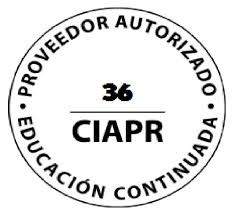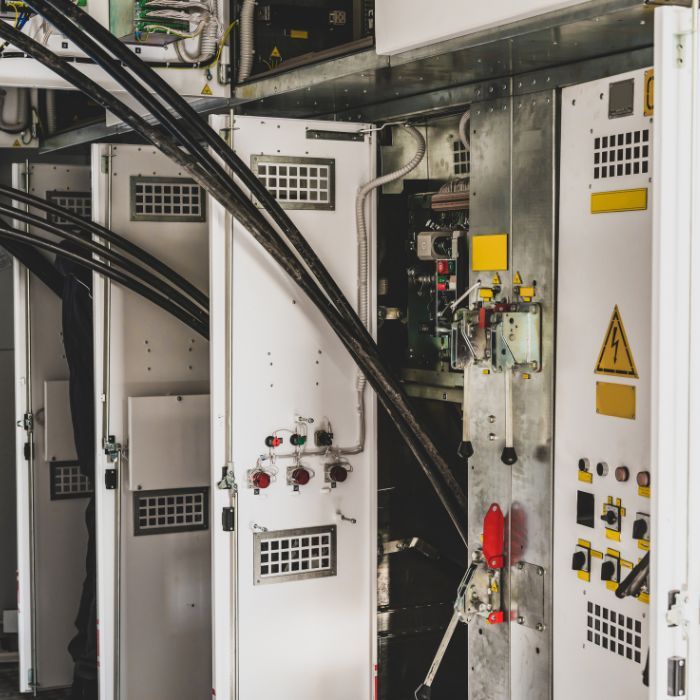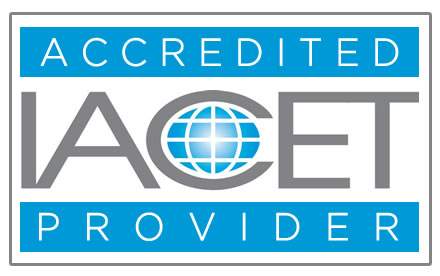6T- Key Aspects of High Voltage Industrial Network Design
Key Aspects of High Voltage Industrial Network Design
In “Key Aspects of High Voltage Industrial Network Design” course, you'll learn...
- -Needs and main constraints to be met
- -Constraints linked to the industrial process
- -Constraints linked to the electrical process
- -Constraints imposed by the utility electrical power distribution network
- -Main rules of industrial network design
- -Reactive power compensation
- -Backup and replacement sources
- -Autonomous electrical energy production
- -Choice of the earthing system
- -Insulation coordination analysis
- -Protection system definition
- -Choice of motor starting method
- -Network dynamic stability
- -Choice of optimal network structure and operation
- -Standard network structures
Overview Faced with increasingly furious competition, manufacturers need to enforce highly rigorous management and their manufacturing facilities need to be highly available. Electrical networks provide the energy needed to operate the production facilities. The provision of an uninterrupted power supply to loads is strived for from the start of the network design, especially during preliminary design of the single line diagram. Reductions in electrical installation and operating costs, together with reliable uninterrupted operation, are key profitability conditions. This technical and economic optimization asks for comprehensive preliminary assessment that includes:
-Specific requirements and constraints related to the industry type,
-Integration of the limits and constraints of the public distribution network,
-Standards and local regulations,
-Particularities of the operating staff, facilities manager and maintenance staff.
The scope of this course is limited to the assessment involved in the design of High Voltage (HV) high power industrial networks which have the following main characteristics:
-Total capacity in the 10 MVA range,
-Autonomous electrical energy generation,
-Power supplied by a national transmission or distribution network,
-Private Medium Voltage (MV) electrical distribution
This course is suitable for electrical engineers with a desire to understand the fundamentals of designing high voltage industrial network electrical systems. Course includes details about various system constraints, reactive power compensation, autonomous power production, choice of the grounding system, insulation coordination analysis etc. Upon successful completion engineers will be able to understand and consider important aspects when designing high voltage industrial networks.
Key Aspects of High Voltage Industrial Network Design
In “Key Aspects of High Voltage Industrial Network Design” course, you'll learn...
- -Needs and main constraints to be met
- -Constraints linked to the industrial process
- -Constraints linked to the electrical process
- -Constraints imposed by the utility electrical power distribution network
- -Main rules of industrial network design
- -Reactive power compensation
- -Backup and replacement sources
- -Autonomous electrical energy production
- -Choice of the earthing system
- -Insulation coordination analysis
- -Protection system definition
- -Choice of motor starting method
- -Network dynamic stability
- -Choice of optimal network structure and operation
- -Standard network structures
Overview Faced with increasingly furious competition, manufacturers need to enforce highly rigorous management and their manufacturing facilities need to be highly available. Electrical networks provide the energy needed to operate the production facilities. The provision of an uninterrupted power supply to loads is strived for from the start of the network design, especially during preliminary design of the single line diagram. Reductions in electrical installation and operating costs, together with reliable uninterrupted operation, are key profitability conditions. This technical and economic optimization asks for comprehensive preliminary assessment that includes:
-Specific requirements and constraints related to the industry type,
-Integration of the limits and constraints of the public distribution network,
-Standards and local regulations,
-Particularities of the operating staff, facilities manager and maintenance staff.
The scope of this course is limited to the assessment involved in the design of High Voltage (HV) high power industrial networks which have the following main characteristics:
-Total capacity in the 10 MVA range,
-Autonomous electrical energy generation,
-Power supplied by a national transmission or distribution network,
-Private Medium Voltage (MV) electrical distribution
This course is suitable for electrical engineers with a desire to understand the fundamentals of designing high voltage industrial network electrical systems. Course includes details about various system constraints, reactive power compensation, autonomous power production, choice of the grounding system, insulation coordination analysis etc. Upon successful completion engineers will be able to understand and consider important aspects when designing high voltage industrial networks.
| Objetivos de aprendizaje | This course teaches the following specific knowledge and skills:
|
|---|---|
| Horas de Contacto | 6 Horas |
| Cursos CIAPR | CURSO TECHNICO |
| Instructor | Velimir |
| Dispositivos | Desktop, Tablet, Mobile |
| Idioma | English |

IACET ACCREDITED PROVIDER
|
Self Learning Solutions LLC es una empresa con más de 14 años de experiencia en este mercado. En Self Learning Solutions estamos orgullosos de haber obtenido la acreditación IACET para nuestra organización, junto con las aprobaciones necesarias para comercializar nuestros productos en todo Estados Unidos. Self Learning Solutions está acreditado por la Asociación Internacional para la Educación y Formación Continua (IACET). Self Learning Solutions cumple con el estándar ANSI / IACET, que es reconocido internacionalmente como un estándar de excelencia en las prácticas de instrucción. Como resultado de esta acreditación, Self Learning Solutions está acreditada para emitir la CEU IACET. |
Requisitos del sistema de SLSTECH
Para ejecutar nuestro sistema de manera eficaz, como mínimo, debe utilizar los componentes del sistema que se enumeran en esta página. Si no lo hace, es posible que el sistema aún funcione pero que se pierda alguna funcionalidad. Las configuraciones internas de los entornos de IT del lugar de trabajo también pueden restringir la funcionalidad de nuestro sistema. El acceso al contenido puede verse afectado, al igual que la posibilidad de subir archivos. También pueden aplicarse limitaciones de tamaño de archivo. Los lugares de trabajo también pueden tener versiones anteriores de software, y nuestro sistema puede no funcionar bien con estos.
Sistema operativo
-
Recomendado: Windows 7, 10, Mac OSX Sierra, iPad IOS10
Velocidad de Internet
-
Use una conexión de Internet (broadband connection) (256 Kbit / seg. o más rápida, esto le permitirá ver videos y presentaciones en línea) a través de un módem inalámbrico USB, ADSL, T1 / T2, fibra óptica o cable.
-
El acceso telefónico será mucho más lento y no lo recomendamos para usar nuestro systma.
Navegadores de Internet
Los navegadores compatibles incluyen:
-
Google Chrome 32 bit versión 50 o posterior (recomendado para una compatibilidad óptima, esto se ha probado exhaustivamente en Windows)
Safari 10 o posterior (recomendado para una compatibilidad óptima, esto se ha probado exhaustivamente en Mac)
Tenga en cuenta que los complementos y las barras de herramientas pueden afectar el rendimiento de cualquier navegador.
-
No se recomienda MS Internet Explorer
Configuraciones
Recomendamos que se habilite lo siguiente:
-
Cookies
-
Ventanas emergentes "Pop-ups" (tanto en el navegador de Internet como en el software de seguridad)
-
Javascript
-
Le recomendamos que utilice la última versión de Adobe Flash Player.
Software
-
Le recomendamos que utilice la última versión de Adobe Acrobat Reader.
-
Para ver todos los recursos cargados en Hazmat Authority, es probable que necesites tener instalado Microsoft Office (Word, Excel, PowerPoint) o un equivalente (por ejemplo, Open Office, Viewer).
Seguridad
Con todos los "firewalls", asegúrese de habilitar la carga de archivos.




Validate your login
Registrarse
Crear una nueva cuenta